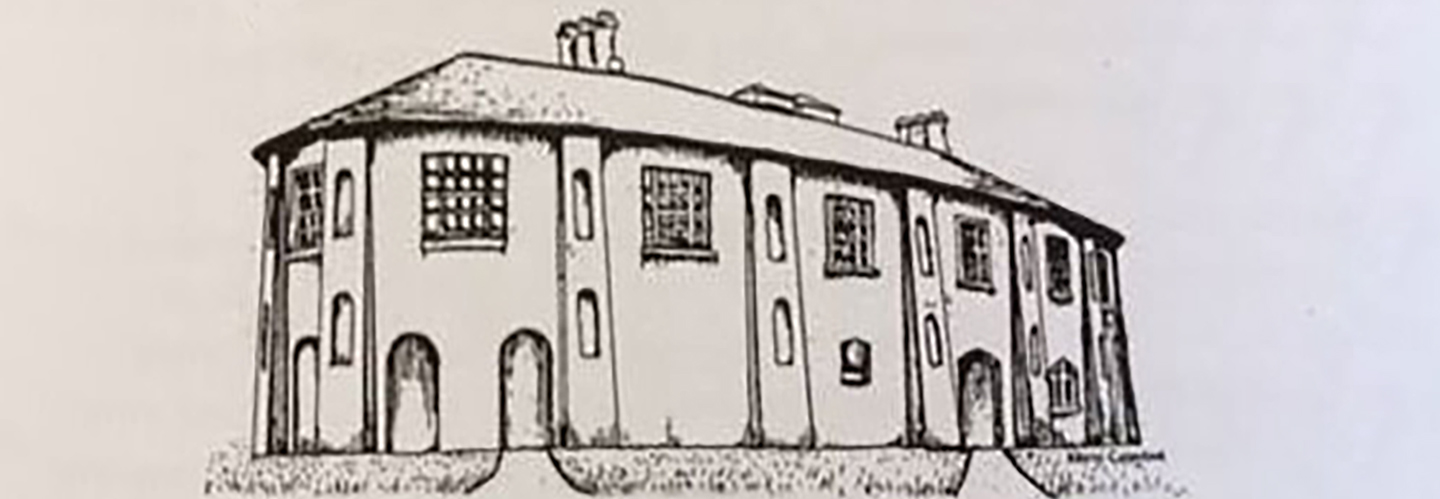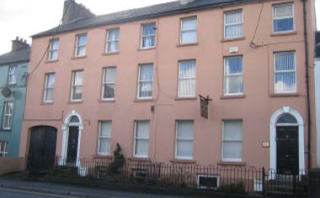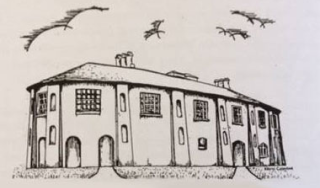

St. Patrick’s Classical School opened its doors for the first time in September 1930. It was however a much earlier manifestation of Diocesan Education for boys in Navan, St. Finian’s, which established the core educational principles still adhered to over 200 years later.
Diocesan Education was first introduced to the town in 1802 as a result of an initiative taken by the Bishop of Meath Most Reverend Patrick Plunkett, the background to which he outlined in a circular to the priests of the Diocese.
“I take this opportunity to inform you that I have lately obtained a lease forever of a house and piece of ground contiguous to the town of Navan, which I destine for a diocesan academy and seminary. It will, I flatter myself, furnish the sons of affluent individuals of our persuasion with all the necessary means of a Catholic and genteel education. As a seminary, it is to unite in favour of those who aspire to our holy state, such advantages of regular discipline and select classical study as are more likely to lay the foundation of solid piety and extensive knowledge, which will hereafter, in our National College [Maynooth], form the virtuous ecclesiastic.”


St Finian’s College, the first Catholic Boy’s School in the northern half of the country, opened as a boarding and day school on Academy Street, Navan on May 2nd, 1802. Day pupils paid £6 per year, boarders £25 to £35 per year. For the next 106 years St. Finian’s acted as both academy and seminary for the ‘better-off’ young men of Navan and the surrounding areas.
In 1836 an advertisement in the Catholic Directory outlined the subjects available a decade before the Famine.
“…the course of studies here include Logic, Metaphysics, and Ethics; the Latin, Greek, French and English languages; History – Ancient and Modern; Oratory and Declamation; pure and mixed Mathematics; the use of globes; Geography ancient and modern with the projection of maps; Bookkeeping, Writing and the other various branches necessary for young gentlemen entering the Colleges of Maynooth, Dublin etc, the counting-house etc.”
A significant new building, a Study Hall, was later added to the original development.
“Fr. Power built the Study Hall which became the nucleus of the future St. Patrick’s Classical School, and because of its unique shape was fondly called “Power’s Duck Egg”.”
In the early 1900’s the need for a more modern and more spacious premises became apparent and as a result a site a mile outside the town was acquired.
Bishop Gaffney then consulted the Parish Priests of the Diocese and they decided by a large majority that the new college should instead be built in Mullingar, the Cathedral town of the Diocese, rather than in Navan. The local rumour mill attributed the decision to the town’s support for Charles Stewart Parnell in his stand against the Irish Bishops in the 1880’s and 1890’s.
Whatever the reasons the St Finian’s buildings in Navan were sold and the school was relocated to Mullingar where it opened in 1908.
“The students from Navan took up residence in the new college in February 1908 and on 2nd March it was blessed and formally opened by Bishop Gaughran. Rev. Denis Flynn who had been President in Navan was its first President.”
It was over two decades before Diocesan Education for boys returned to Navan. In June 1930 his Lordship, the Bishop of Meath, Dr. Thomas Mulvany addressed a letter to the parishioners of the town relating to an extension to the Parochial House and to the educational needs of boys in Navan parish.
“For the past twenty years the people of Navan had a grievance. They had no classical or secondary school for boys. As soon as the matter was brought to my attention I determined to supply the want and I count myself very fortunate in being able to purchase the Study Hall of the old St. Finian’s for the purpose. When it is fitted up, it will be an admirable building for a Day School.”
On September 9th, 1930 following Mass celebrated by Bishop Mulvany, the new school was blessed and named St. Patrick’s Classical School, a name in keeping with the school’s educational philosophy.
* Past records of St. Patrick’s Classical School can be viewed here.
In 1970 St. Patrick’s Classical School moved to a new campus at the outskirts of the town.
As its name indicated, it placed heavy emphasis on the teaching of the classics, Latin and Greek, rather than vocational subjects. Until the granting of free education by the Irish Minister for Education, Brian Lenihan, (his predecessor who proposed free education, Donogh O’Malley died before he could implement the plan) the school operated as a fee-paying school. It is education is now free. Though predominantly Roman Catholic, the school attracts many pupils from other religions.
Although the Roman Catholic Bishop of Meath remains the school patron, the school has long been under lay control and has not had a member of the clergy as its principal since 1970.
On 27 November 2009, Uachtáran na hÉireann Mary McAleese visited the school.
Note: St. Patrick’s Classical School would like to acknowledge the assistance of the Navan and District Historical and Archaeological Society in preparing this content.
Notable Alumni
The school has produced many prominent figures in Irish politics, business, the international media and comedy. Among its most prominent ex-pupils were James Tully, the Labour Party Deputy Leader and Irish government minister in the 1970s and early 1980s, Jim Fitzsimons, a longtime Fianna Fáil Member of the European Parliament, Jim Duffy, an author and journalist, Simon Cumbers, a prominent broadcast journalist (killed by al-Qaeda in 2004), David Beggy, a Gaelic football star turned successful Rugby player, Tommy Tiernan and Dylan Moran, both winners of the famous international Perrier Award for Comedy at the Edinburgh Festival who had award-winning comedy shows on British television, London West-End star Willy Byrne, Karl Fagan, founder of the now infamous flymo-ing (aka Lawnmower Soc) and Irish television presenter Hector Ó hEochagáin.
The successes of Tiernan, Moran, Darcy, Moore, Byrne and McManus were credited to the passion for stage and theatre of one of our former school teachers, Richie Ball, whose success in the 1980s in inspiring teenagers to opt for careers in the arts earned considerable media attention.
The school has itself produced many current stars in Irish sport, especially in Gaelic games, including many past and present Meath Gaelic footballers.